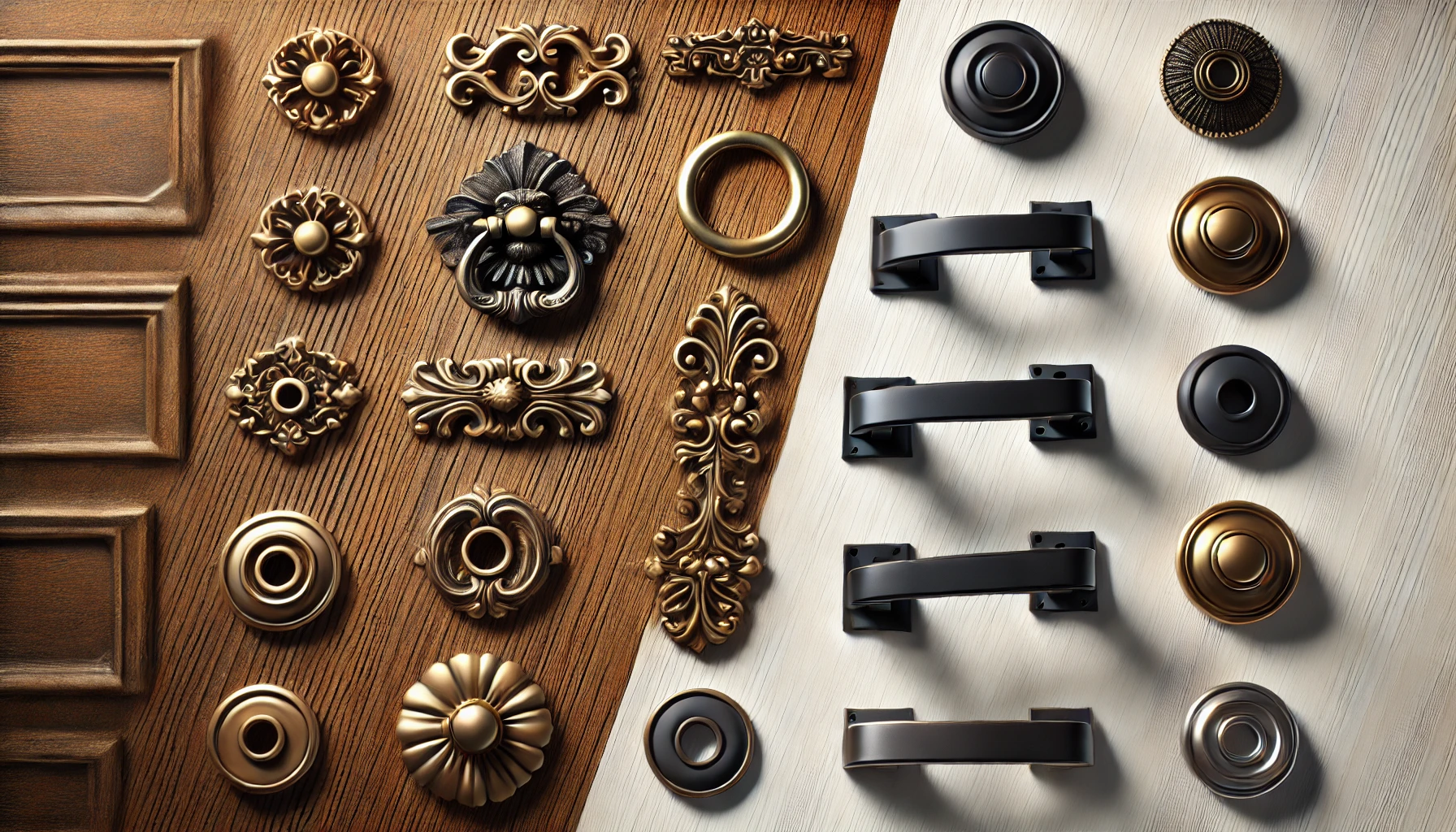Vintage vs. Contemporary Hardware: Which Style Fits Your Furniture?
Choosing the right hardware for your furniture can significantly impact the overall aesthetic of your space. Whether you’re furnishing a modern apartment or restoring a vintage piece, the hardware you select—such as knobs, pulls, hinges, and handles—plays a pivotal role in defining the furniture’s style. In this furniture hardware and fittings guide, we’ll compare vintage vs contemporary hardware designs, exploring how each complements various decor styles and functional needs.
Understanding Vintage Hardware
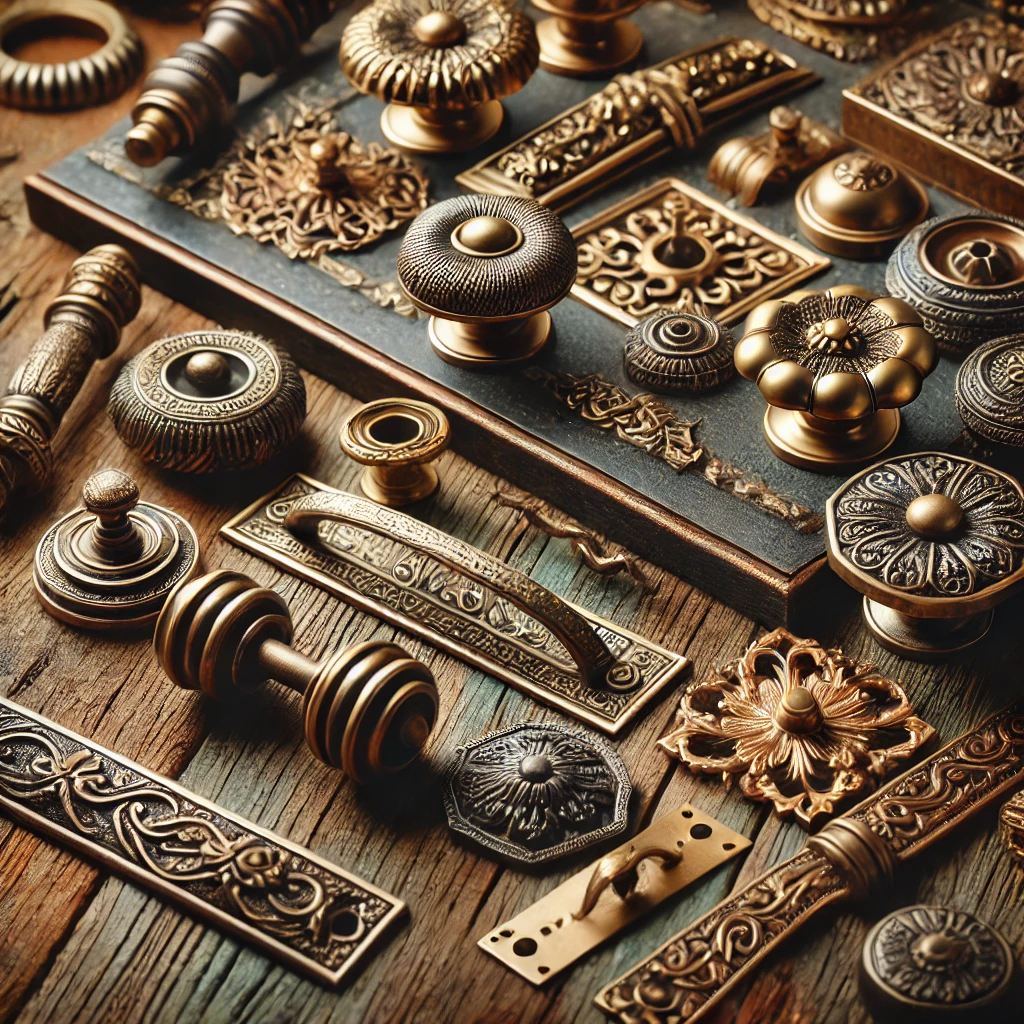
Vintage hardware refers to designs inspired by or originating from specific historical periods, typically ranging from the 18th to early 20th centuries. This style evokes nostalgia and timeless elegance, making it an excellent choice for classic, rustic, or eclectic interiors.
Key Characteristics of Vintage Hardware:
- Material Choices:
- Brass, bronze, and wrought iron are commonly used.
- Patina finishes that add an aged or tarnished look are prevalent.
- Design Details:
- Intricate carvings, floral motifs, and geometric patterns.
- Handles and knobs often have ornate and elaborate designs.
- Historical Influences:
- Victorian styles feature intricate and romantic detailing.
- Art Deco hardware highlights bold geometric shapes and rich materials.
- Colonial designs emphasize simplicity and functionality.
- Color Tones:
- Warm and muted shades, such as antique gold, aged silver, and oil-rubbed bronze.
Best Applications for Vintage Hardware:
- Traditional Furniture: Dressers, wardrobes, and cabinets with classic wood finishes like mahogany, walnut, or oak.
- Rustic and Farmhouse Decor: Weathered hardware adds charm and authenticity.
- Antique Restorations: Perfect for restoring vintage furniture to its original grandeur.
Pros of Vintage Hardware:
- Adds a sense of history and character to furniture.
- Works well with textured and richly grained materials.
- Offers timeless appeal for traditional and eclectic interiors.
Cons of Vintage Hardware:
- May not blend seamlessly with sleek, modern designs.
- Limited availability in contemporary finishes and styles.
Exploring Contemporary Hardware
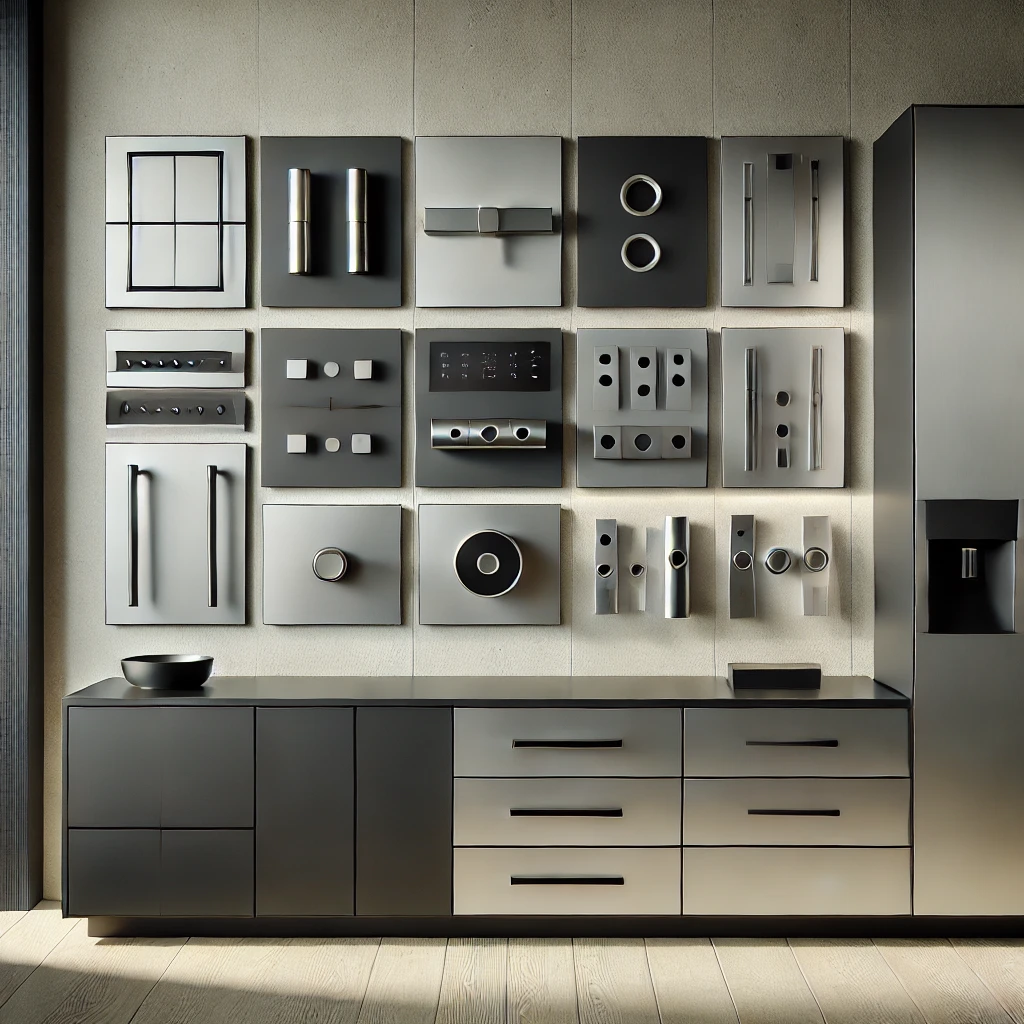
Contemporary hardware, on the other hand, emphasizes simplicity, functionality, and innovation. These designs cater to modern interiors where minimalism, clean lines, and practicality take precedence.
Key Characteristics of Contemporary Hardware:
- Material Choices:
- Stainless steel, aluminum, and chrome dominate.
- Matte black and polished nickel are trending finishes.
- Design Details:
- Sleek, streamlined shapes with little to no ornamentation.
- Focus on geometric forms, such as rectangles, circles, and linear designs.
- Technological Innovations:
- Soft-close hinges and touch-latch mechanisms for seamless functionality.
- Smart hardware with integrated features, such as lighting or electronic locks.
- Color Tones:
- Neutral and monochromatic shades, such as black, white, and metallic tones.
Best Applications for Contemporary Hardware:
- Modern Furniture: Minimalist cabinets, tables, and storage units.
- Industrial and Urban Interiors: Complement concrete, glass, and exposed metal finishes.
- Scandinavian Decor: Enhances the clean, functional aesthetic of light woods and neutral palettes.
Pros of Contemporary Hardware:
- Offers a modern and sophisticated look.
- Easy to clean and maintain due to simple designs.
- Compatible with innovative features like soft-close mechanisms.
Cons of Contemporary Hardware:
- Can feel cold or impersonal in certain settings.
- May lack the intricate charm of vintage designs.
Comparing Vintage and Contemporary Hardware
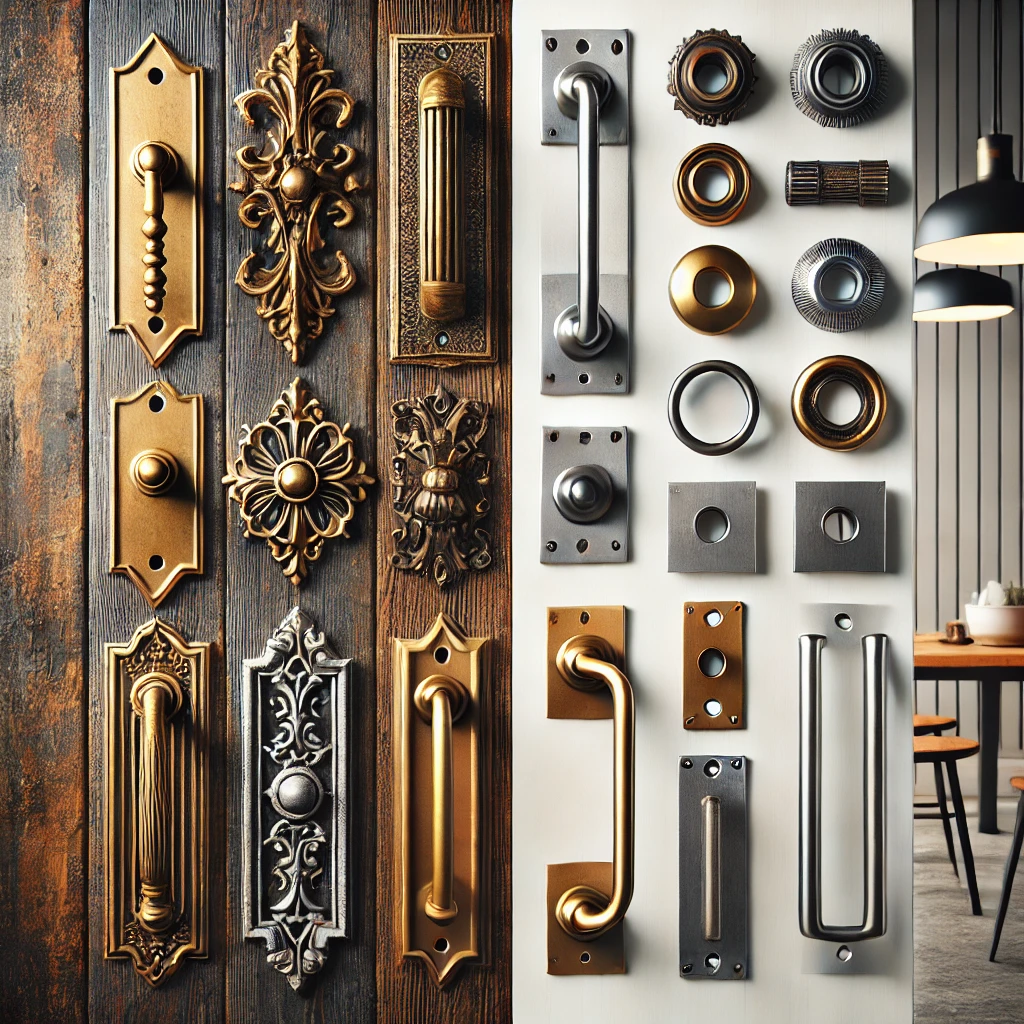
To make an informed choice, it’s important to consider the specific attributes of each style and how they align with your decor preferences.
| Aspect | Vintage Hardware | Contemporary Hardware |
| Aesthetic Appeal | Ornate, detailed, and nostalgic | Sleek, minimalistic, and modern |
| Materials | Brass, bronze, wrought iron | Stainless steel, aluminum, chrome |
| Finishes | Patina, antique, oil-rubbed | Matte, polished, brushed |
| Functionality | Basic mechanisms | Advanced features like soft-close or touch-latch |
| Durability | Sturdy and long-lasting | Resistant to corrosion and wear |
| Compatibility | Best for traditional, rustic, or vintage decor | Ideal for modern, industrial, or Scandinavian decor |
How to Choose the Right Hardware Style
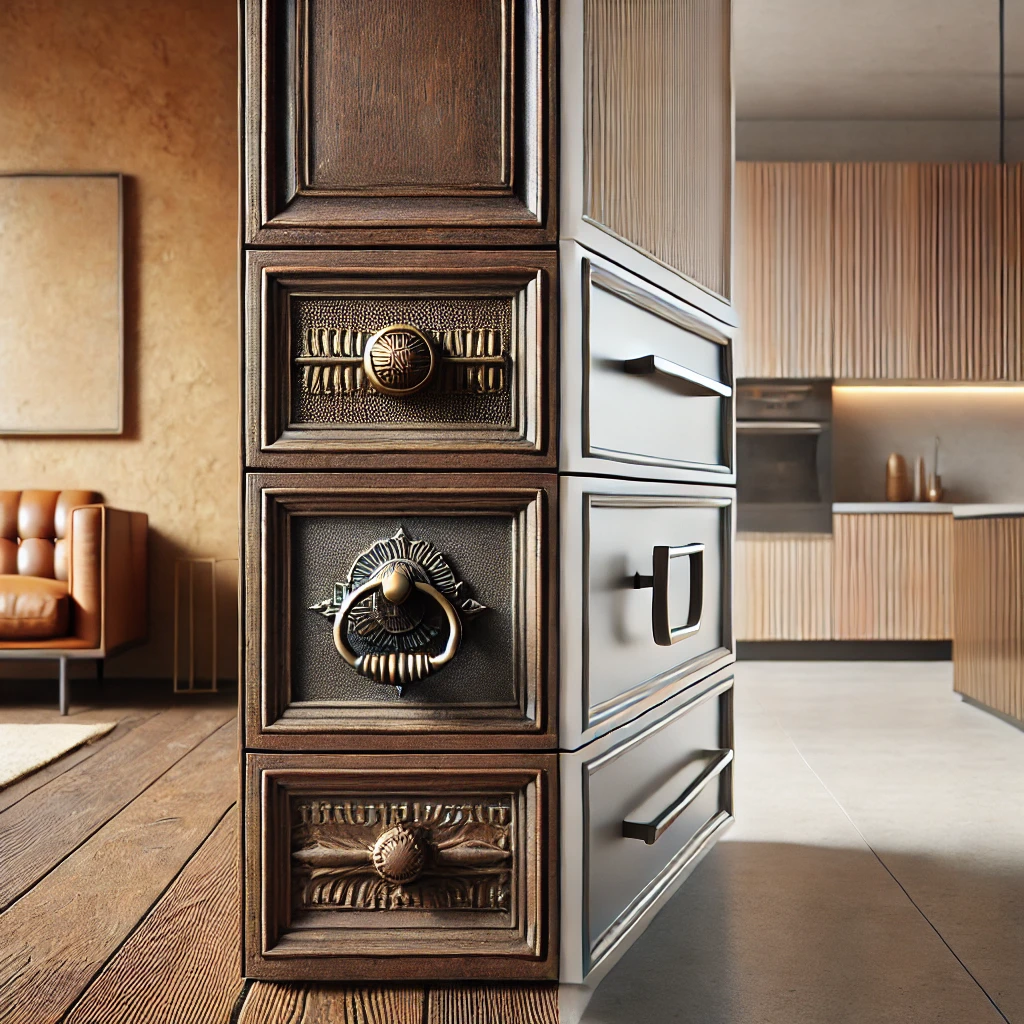
When deciding between vintage vs contemporary hardware, consider the following factors:
- Furniture Style:
- Match the hardware to the furniture’s design. For example, ornate vintage handles suit antique wooden cabinets, while sleek contemporary pulls complement minimalist furniture.
- Room Decor:
- Coordinate hardware with the overall theme of the space. Vintage hardware pairs well with warm, textured interiors, whereas contemporary designs suit clean and open layouts.
- Functionality Needs:
- If ease of use and advanced features are a priority, contemporary hardware with soft-close mechanisms might be the better choice.
- Material and Finish:
- Select materials and finishes that align with your furniture’s color palette and texture. For instance, oil-rubbed bronze adds warmth to wood, while polished chrome enhances glass and metal.
- Budget:
- Vintage hardware can sometimes be more expensive due to intricate craftsmanship, whereas contemporary hardware often offers cost-effective options.
Blending Vintage vs Contemporary Hardware Styles
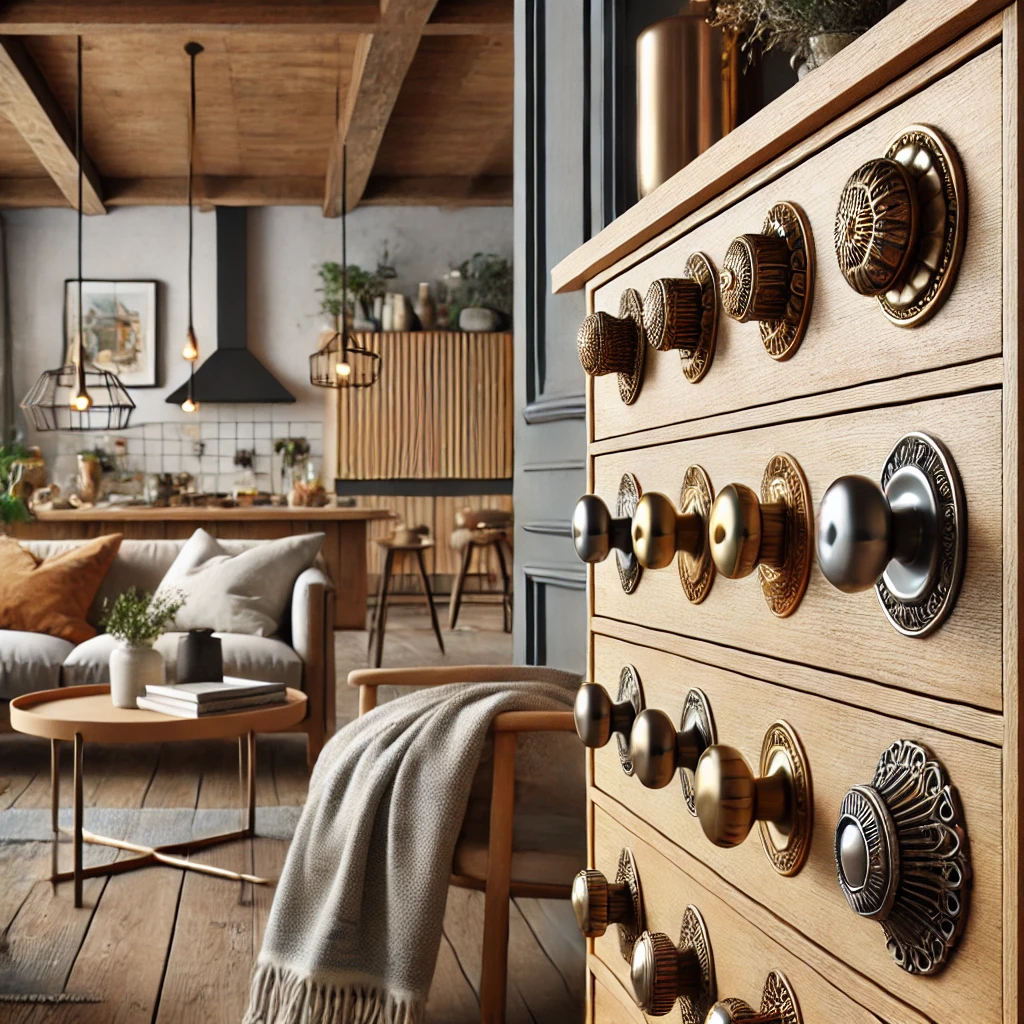
For those who love elements of both styles, mixing vintage and contemporary hardware can create a unique and personalized look. Here are a few tips:
- Combine Finishes:
- Use vintage knobs with a contemporary pull on the same piece of furniture for an eclectic look.
- Layer Textures:
- Pair smooth, modern surfaces with ornate vintage hardware to balance the aesthetic.
- Zone Mixing:
- Use vintage hardware in one room (e.g., the living room) and contemporary in another (e.g., the kitchen) to differentiate spaces.
Conclusion
Both vintage and contemporary hardware bring unique qualities to furniture design. Vintage hardware offers timeless charm and intricate details, making it perfect for traditional or rustic decor. Meanwhile, contemporary hardware’s sleek and innovative designs cater to modern and minimalist interiors.
By understanding the characteristics, applications, and benefits of each style, you can make an informed decision that enhances your furniture and complements your space. Whether you’re restoring a family heirloom or outfitting a modern home, the right hardware choice can elevate your furniture from functional to fabulous.
Read Related Blog:
- How to Choose the Right Salon Chair for Your Business
- Why Salon Stools are Essential for Your Business
- Must-Have Salon Equipment for a Professional Setup
- The Ultimate Guide to Salon Furniture
- How to Choose the Best Salon Chair
- Create the Perfect Shampoo Station for Your Salon
- Top Trends in Salon Furniture for 2025
- The Importance of Salon Sterilizers for Client Safety
- What is a Hydra Facial Machine and How does it Work
- How to Stay Ahead of Beauty Trends a Guide for Salon Owners

